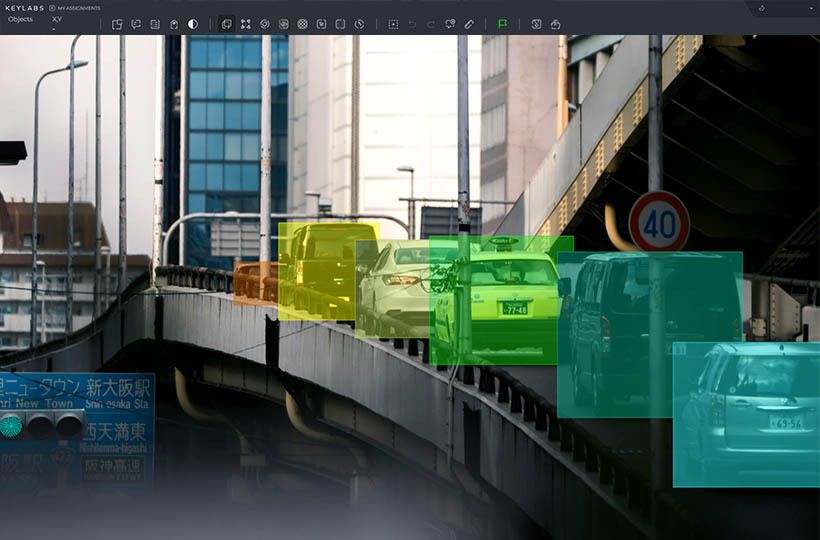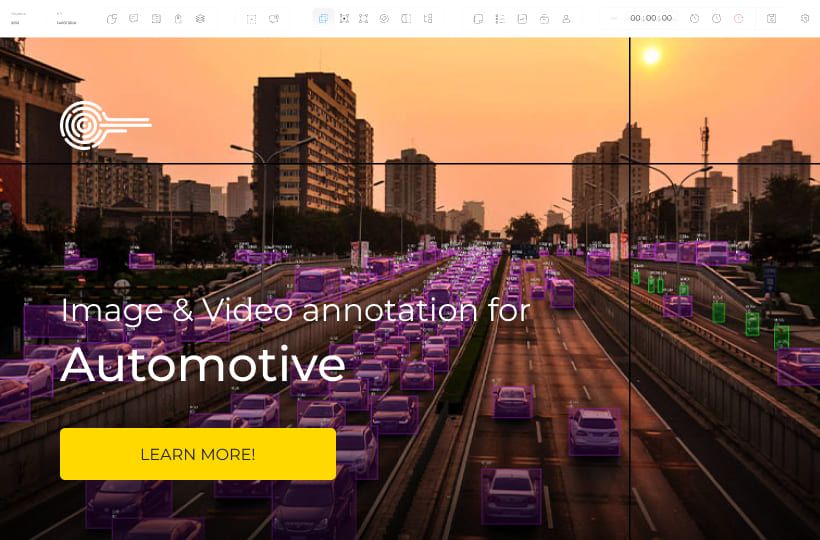Edge AI Annotation: On-Device Machine Learning Data
In today's technological world, AI is increasingly moving directly to users' devices, rather than being confined to cloud servers. Edge AI is an approach that allows machine learning models to run locally on edge devices such as smartphones, drones, or industrial sensors. One key component of this process is Edge AI Annotation, which involves collecting and labeling data directly on the device. This practice ensures that relevant, accurate, and contextually meaningful data is created for training models, allowing them to operate effectively in real time and in a specific environment.
Key Takeaways
- Local data handling improves security compliance for regulated industries.
- Real-time model updates enable continuous performance improvements.
- Offline functionality ensures reliability in environments with challenging connectivity.

Localized Data Labeling
This is when data is labeled directly where it is collected and where the model will use it. The goal is for the model to be trained on real data from a specific environment, rather than on abstract universal sets. For example, if a drone flies over a city, the annotations will relate specifically to urban objects, such as cars, streetlights, trees, and buildings. A model trained on such localized data will more easily recognize real objects in its working environment. The advantage of this approach is that the model becomes more accurate and efficient for a specific device or situation, rather than simply "general" for all cases.
Why On-Device Processing Matters
- Low Latency. On-device ML enables instant data processing directly on the device, eliminating delays in transmission to the cloud, which is crucial for real-time applications in drones, robots, or IoT devices.
- Data Privacy. Local processing ensures that data remains on the device, reducing the risks of confidential information leakage, especially in mobile applications and IoT annotation.
- Bandwidth Efficiency. Edge computing reduces the amount of data transmitted over the network, thereby saving resources and lowering the cost of processing large datasets.
- Contextual Accuracy. Mobile annotation and distributed annotation enable models to consider the specific details of the local environment, thereby increasing the accuracy of the results.
- Reliability and Offline Functionality. Edge deployment enables devices to operate autonomously, even without an Internet connection, ensuring the continuous operation of systems.
- Energy and Cost Efficiency. Local processing on the device consumes less energy and reduces the cost of computing in the cloud, especially for large IoT systems.
- Faster Iteration and Personalization. On-device ML and mobile annotation allow you to quickly adapt a model to a specific user or scenario without waiting for centralized training.
Core Concepts Behind Data Annotation for Machine Learning
Annotation accuracy is a key factor. The data must be appropriately labeled so that the model can learn from reliable information. In the case of IoT annotation or mobile annotation, this means that the device's sensors or cameras collect data in a real environment, and the markup reflects the real conditions that the model will encounter.
Second, consistency and standardization are essential. Distributed annotation often involves multiple devices or operators, so it is necessary to maintain uniform labeling rules to ensure data compatibility for training a single model.
The third concept is contextuality. The data must reflect the specifics of the environment and usage scenario. For example, for the edge deployment of drone models, annotations should display obstacles and objects in flight under the exact conditions in which the drone operates.
The fourth principle is resource efficiency. With local processing or on-device ML, the device is limited in terms of memory, energy, and computing power, so the annotation must be optimized to avoid overloading the system.

Common Types of Data Annotation Techniques
- Image Annotation. Used to label objects in images or videos. In the context of edge AI and on-device ML, this could be obstacle recognition for drones or objects in IoT device cameras.
- Video Annotation. Combines image, bounding box, and segmentation techniques to track objects in video. This is important for edge AI in surveillance systems and autonomous robots.
- 3D Cuboid Annotation. For 3D object labeling in video or point clouds. Useful for edge deployment in autonomous cars or drones.
- Audio Annotation. Markup of audio signals, speech, or noise to train audio recognition models. Used for on-device ML in mobile applications and IoT devices.
How Annotation Impacts Model Training and Accuracy
The quality of the annotations determines the quality of the model. If the data is incorrectly or inconsistently labeled, the model is trained on erroneous examples, which in turn reduces its accuracy. In mobile annotation or IoT annotation, the annotations must reflect the real-world conditions in which the device operates; otherwise, the model will often make mistakes in practice.
Second, the quantity and diversity of annotated data are crucial. Edge deployment requires data from various scenarios to ensure the model operates reliably under different conditions.
The third point is the consistency of annotations. In distributed annotation, data can be collected from various devices, making it essential to maintain standardized labeling rules. Otherwise, the model may learn inconsistent patterns, which will reduce accuracy and reliability.
The fourth aspect is contextual relevance. In local processing on the device, annotations must consider the specific environment and usage scenario, as the model is trained on data that is actually present on the device.
Step-by-Step Guide to Implementing Edge AI Annotation
- Define goals and usage scenarios. First, you need to understand what you need the annotation for: urban drones, industrial sensors, mobile apps, or IoT devices. This determines the data type and annotation format.
- Data collection on devices. Sensors, cameras, microphones, or other sources are used. It is essential that the data accurately reflects the real-world conditions of the device, thereby enhancing the contextual accuracy of the model.
- Pre-annotation. The device performs basic automatic data labeling using models or algorithms. This can be object recognition, image segmentation, or audio classification.
- Annotation validation and correction. Human or additional algorithms validate and refine the labeling to minimize errors. In distributed annotation, it is essential to adhere to standards to ensure compatibility between data from different devices.
- Optimization for local processing. Annotations and data are compressed or adapted to the memory and power constraints of the device, allowing for efficient use of local processing and on-device ML.
- Model training and refinement. Use annotated data for on-device fine-tuning or transfer some of the data to the cloud for centralized training, depending on the scenario.
- Accuracy testing and evaluation. Test the model in real-world device conditions to ensure that the annotations provide the desired performance.
- Iteration and update. Collect new data, repeat annotation and refinement to ensure the model remains accurate in dynamic conditions. This process is essential for edge deployments, where conditions change rapidly.
Preparing Dataset
First, collect relevant data directly from devices or sensors that will be used in the real environment. This can be drone video, images from IoT device cameras, audio signal, or sensor data.
This is followed by data cleaning and normalization. The collected data often contains noise, repetitions, or unnecessary information that needs to be removed. For mobile annotation and local processing, it is also crucial to optimize the amount of data so that the device can operate efficiently without overloading its memory or processor.
The next step is data annotation. Image, video, audio, or sensor signal techniques are used depending on the type of data. In distributed annotation, it is crucial to adhere to standards and ensure consistency in labeling so that the model is trained on consistent data.
After this, the data can be divided into training, validation, and test sets, allowing you to evaluate the model's accuracy and avoid overfitting. For edge deployment, each set must include scenarios from the real environment where the model will be used.
Choosing the Right Tools and Techniques
First, you need to determine the type of data: image, video, or audio. Next, you need to evaluate the platform and device resources. Mobile annotation requires lightweight applications that operate efficiently without burdening memory and processor resources. In the case of local processing on drones or industrial sensors, it is crucial to select tools that enable automatic annotation with minimal computational costs.
No less important is support for integration with ML pipelines. Tools should easily export data to formats compatible with on-device ML frameworks or support direct training of models on devices during edge deployment.
FAQ
What is Edge AI Annotation?
Edge AI Annotation is the process of collecting and labeling data directly on the devices where the model will be used. It improves accuracy and contextual relevance for on-device ML.
Why does local processing matter?
Local processing reduces latency, saves network bandwidth, and protects data privacy because data does not need to be sent to the cloud.
What is Localized Data Labeling?
Localized Data Labeling is annotating data directly in the environment where the model operates. This ensures the model learns from real-world conditions.
What are the primary data annotation techniques?
Key techniques include bounding box, polygon, semantic segmentation, keypoint, 3D cuboid, as well as annotation of audio, text, video, and sensor data. The choice depends on the data type and use case.
How does annotation affect model accuracy?
High-quality and consistent annotations enable proper model training. They help avoid errors and improve performance on real-world data.
What is distributed annotation, and why is it important?
Distributed annotation involves multiple devices or operators in the labeling process. It allows scaling and ensures annotation consistency across datasets.
What are the advantages of on-device ML for Edge AI?
Models run faster, operate autonomously, and keep data secure. They adapt to local conditions and reduce network load.
What does dataset preparation for Edge AI involve?
It includes collecting relevant data, cleaning, normalizing, annotating, splitting into training and test sets, and optimizing for device resources.
How should you choose tools for data annotation?
The choice depends on data type, device limitations, system scale, and integration with ML pipelines. Support for mobile annotation and local processing is crucial for efficiency.
Why is the contextual relevance of data significant?
Data reflecting real usage conditions allows models to perform accurately in their environment. This enhances reliability and effectiveness in edge deployment.
